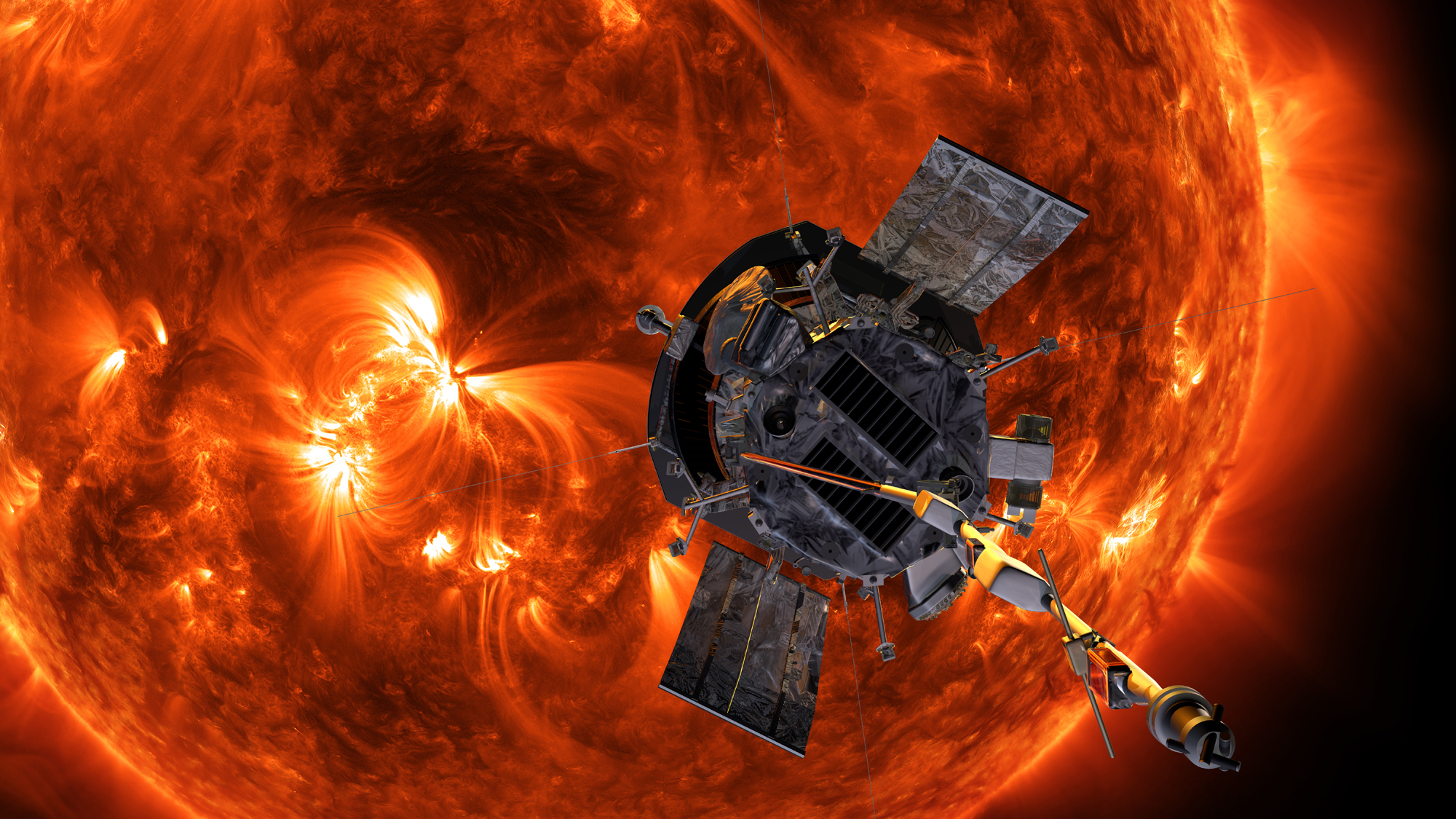
NASA's pioneering Parker Solar Probe just zoomed by the sun for the third time.
The spacecraft completed its third close solar flyby on Sunday (Sept. 1), coming within 15 million miles (24 million kilometers) of our star, NASA officials said. At the moment of closest approach, or perihelion, the probe was traveling more than 213,200 mph (343,100 km/h), they added.
And the Parker Solar Probe survived its latest trial by fire in good condition.
Related: NASA's Parker Solar Probe Mission to the Sun in Pictures
"Mission controllers at the Johns Hopkins Applied Physics Laboratory in Laurel, Maryland, received a green 'A' beacon from the spacecraft soon after perihelion, meaning all systems were performing as designed and that the spacecraft was in good health," mission team members wrote in an update Tuesday (Sept. 3).
The $1.5 billion Parker Solar Probe launched in August 2018, on a mission to help researchers better understand how the sun ticks. If all goes according to plan, the spacecraft will make a total of two dozen close solar flybys during its seven years of operation, getting closer and closer to our star over time.
The spacecraft already holds the all-time speed and close-solar-approach records, but it will continue setting new marks through 2025. During the final few flybys, for example, the Parker Solar Probe will get within a mere 3.83 million miles (6.16 million km) of the solar surface, reaching top speeds of about 430,000 mph (690,000 km/h).
Get the Space.com Newsletter
Breaking space news, the latest updates on rocket launches, skywatching events and more!
The spacecraft's various observations should help scientists solve some long-standing solar mysteries, mission team members have said. Chief among those puzzles are how the solar wind, the stream of charged particles flowing from the sun, gets accelerated to such tremendous speeds, and why the sun's outer atmosphere is so much hotter than its surface.
- Here's What Earth Looks Like When You're Heading to the Sun
- Solar Quiz: How Well Do You Know Our Sun?
- Launch Photos! NASA's Parker Solar Probe Blasts Off to Touch the Sun
Mike Wall's book about the search for alien life, "Out There" (Grand Central Publishing, 2018; illustrated by Karl Tate), is out now. Follow him on Twitter @michaeldwall. Follow us on Twitter @Spacedotcom or Facebook.
Join our Space Forums to keep talking space on the latest missions, night sky and more! And if you have a news tip, correction or comment, let us know at: community@space.com.

Michael Wall is a Senior Space Writer with Space.com and joined the team in 2010. He primarily covers exoplanets, spaceflight and military space, but has been known to dabble in the space art beat. His book about the search for alien life, "Out There," was published on Nov. 13, 2018. Before becoming a science writer, Michael worked as a herpetologist and wildlife biologist. He has a Ph.D. in evolutionary biology from the University of Sydney, Australia, a bachelor's degree from the University of Arizona, and a graduate certificate in science writing from the University of California, Santa Cruz. To find out what his latest project is, you can follow Michael on Twitter.









